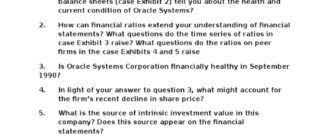[ad_1]
There is no exact definition of ‘Romanticism’. However there are a range of themes, such as imagination and transcendence, the adoration of nature, the mysterious and the sublime, and the figure of the poet as an important individual that occur frequently in the literature of writers labeled Romantics. The Romantic era in poetry is generally thought to span from 1780 to 1830. Byron was born in 1788 and is considered a major poet of the Romantic period. Most critics consider Don Juan his masterpiece. This article analyzes a fragment from the first canto.
Such a weighty concept as Romanticism can never really be clearly defined, but we can come closer to comprehending some of its characteristics by looking at the structure, themes, and language used in poems of that era.
Don Juan is an unfinished poem of mock epic proportions. The protagonist’s formative years are presented in the first canto, chronicled in the third person by a cynically urbane narrator who adopts a detached and conversational tone, thus imbuing Juan’s adventures with a world-weary irony.
A prevailing sense of disillusion is typical of the narrative voice employed. The language is erudite and witty, with many classical allusions – ‘what person can be partial / To all those nauseous epigrams of Martial?’ appearing to spill forth from the mouth of a worldly yet jaded aristocrat. The style is affectedly improvisatory, despite the use of high-flown vocabulary: ‘intestate’ in stanza 37 and ‘illumined’ in stanza 46, it would appear that Byron was striving for an effect of immediacy and directness: ‘The Missal / too (it was the family Missal).’
Humour and irony are also important elements in Don Juan, and the poem’s formal structure is specifically designed to accommodate them. Byron employs a sophisticated form known as ottava rima: an eight line stanza form with a rhyming scheme of ABABABCC. As well as facilitating the conversational mode, the use of ottava rima also allows him to build up a seemingly dramatic situation over the first six lines, only to have a shift in tone during the final couplet, frequently creating an effect of bathos, as evinced in the closing line of stanza 38, where it is imparted that Juan has learned ‘how to scale a fortress – or a nunnery’.
The narrator is arguably a character in his own right, applying a unique voice that consists of a language and style that is all their own, no doubt quite dissimilar to that of the young Juan’s. Such a division in the poem’s architecture runs parallel to the relationship between story and plot. The former relates to the actual events which befall Juan, the latter is concerned with how these events manifest themselves, and how they are imparted by the narrator – a process known as focalization.
The late eighteenth-century was a time of massive social upheaval, with the French and American revolutions. Such cataclysmic events inevitably influenced writers of the age, regardless of their style. In his time Byron was the second most famous man in Europe after Napoleon.
[ad_2]
Book Of A Lifetime: Don Juan by Lord Byron - The Independent
February 1, 2008 - The IndependentBook Of A Lifetime: Don Juan by Lord Byron The Independent...
Cottage in the grounds of Lord Byron's home up for grabs for £500,000 - Daily Mail
January 12, 2021 - Daily MailCottage in the grounds of Lord Byron's home up for grabs for £500,000 Daily Mail...
Manuscript of Lord Byron's famous Don Juan to go on display - The National
April 12, 2019 - The NationalManuscript of Lord Byron's famous Don Juan to go on display The National...
Summer reads to get lost in, chosen by Hilary Mantel, Maggie O’Farrell, Raven Leilani and more - The Guardian
July 5, 2021 - The GuardianSummer reads to get lost in, chosen by Hilary Mantel, Maggie O’Farrell, Raven Leilani and more The Guardian...
The Glorious Romantics. Part one: Lord Byron . . . 'Mad, bad and dangerous to know' (Encore presentation) - theberkshireedge.com
August 2, 2020 - theberkshireedge.comThe Glorious Romantics. Part one: Lord Byron . . . 'Mad, bad and dangerous to know' (Encore presentation) theberkshireedge.com...
Italy And The English Romantic Poets - Italics Magazine
April 30, 2021 - Italics MagazineItaly And The English Romantic Poets Italics Magazine...






